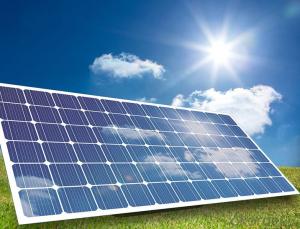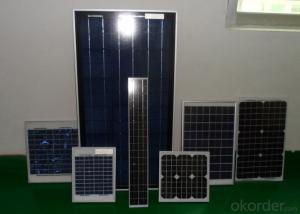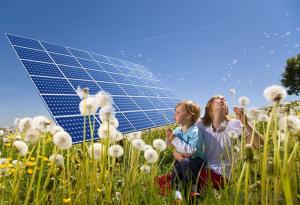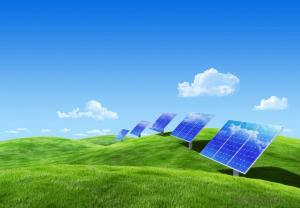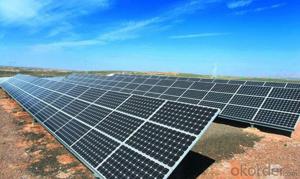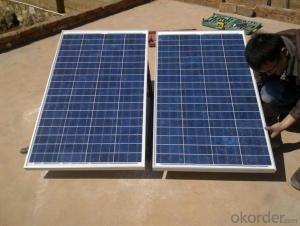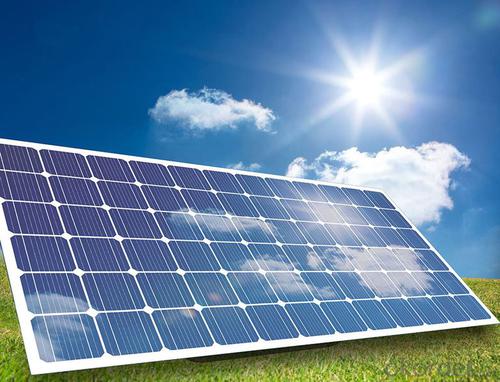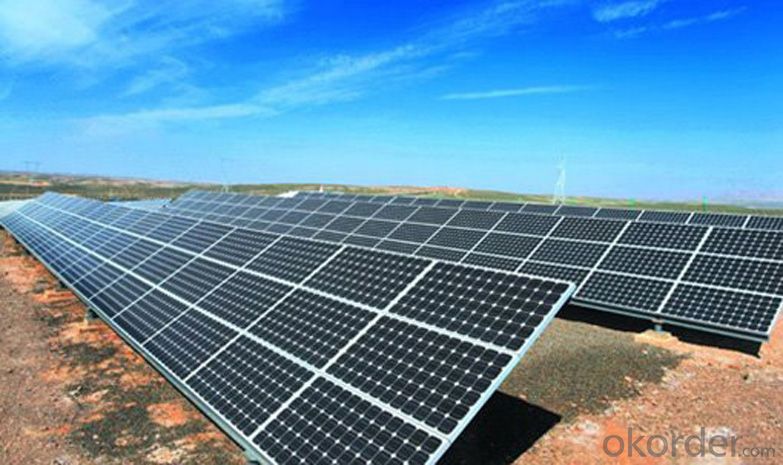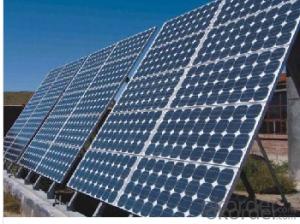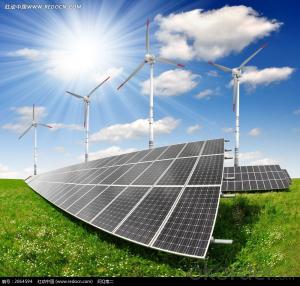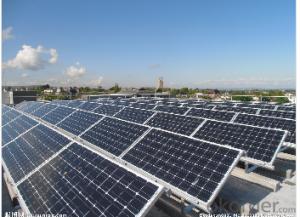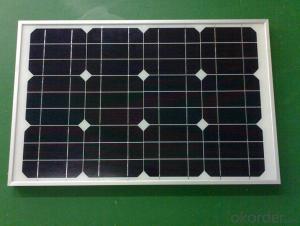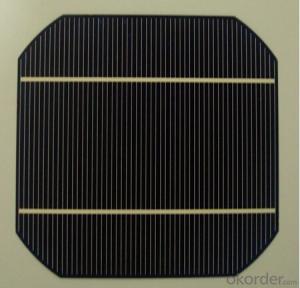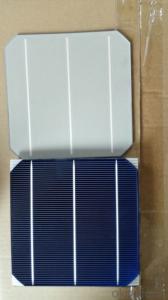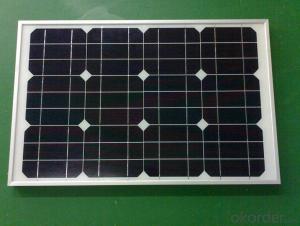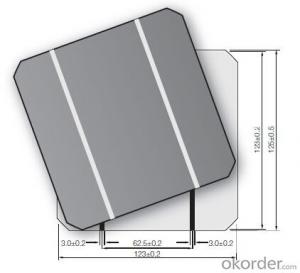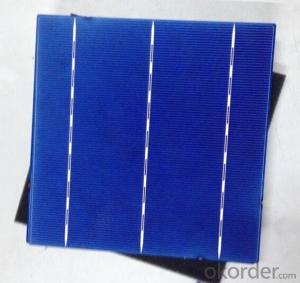156mm Solar Cells Photovoltaic Product for Churches - Solar Panels
- Loading Port:
- Shanghai
- Payment Terms:
- TT OR LC
- Min Order Qty:
- 7875 watt
- Supply Capability:
- 10000000 watt/month
OKorder Service Pledge
OKorder Financial Service
You Might Also Like
Specification
Solar Module Summarize
Solar Module is the core part of solar PV power systems, also is the highest value part of it. The function of Solar Module is to convert the sun's radiation to electrical energy, or transfer it to battery and store in it, or to drive the load running.
The Product has been widely used in space and ground, it mainly used for power generation systems, charging systems, road lighting and traffic signs areas. It could offer a wide range of power and voltage, and with high conversion efficiency, and long service life.
Technical Parameter:
Model Type | Good Quality 250W Solar Panel |
Peak Power-Pmax(W) | 250W |
Open Circuit Voltage-Voc(V) | 44.2 |
Maximum Power Voltage-Vmp(V) | 36 |
Short Circuit Current-Isc(A) | 5.4 |
Maximum Power Current-Imp(A) | 5 |
Maximum System Voltage | 1000V DC |
Maximum Series Fuse Rating | 10A |
Power Tolerance | -1~+3% |
Temperature Coefficients of Pmax | -0.45%/℃ |
Temperature Coefficients of Voc | -0.348%/℃ |
Temperature Coefficients of Isc | 0.031%/℃ |
Nominal Operating Cell Temperature | 44.5±2℃ |
Standard Testing Condition(STC) | Irradiance:1000W/m²;Temperature:25℃;AM=1.5 |
Qualification Test Parameters | |
Operating Temperature | -40℃~+85℃ |
Storage Temperature | -40℃~+85℃ |
Pressure Bearing | ≥5400Pascal/m² |
Wind Bearing | ≥5400Pascal/m² |
Mechanical Characteristics | |
Cell Size | Poly 156*156mm±0.5 |
No.of Cells | 60pcs(6*10) |
Dimension | 1640*992*40mm |
Weight | 18.8Kg |
Glass | 3.2mm High Transmission,Low Iron |
Frame | Anodized Aluminum Alloy |
Junction Box | IP65Rated |
Internal Diodes | 3 Bypass Diodes |
Cable | 1*4.0mm² Length 900mm |
Product Show:
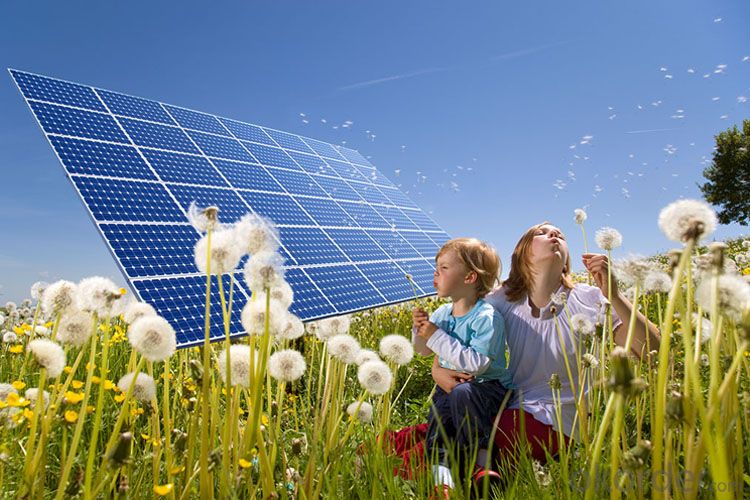
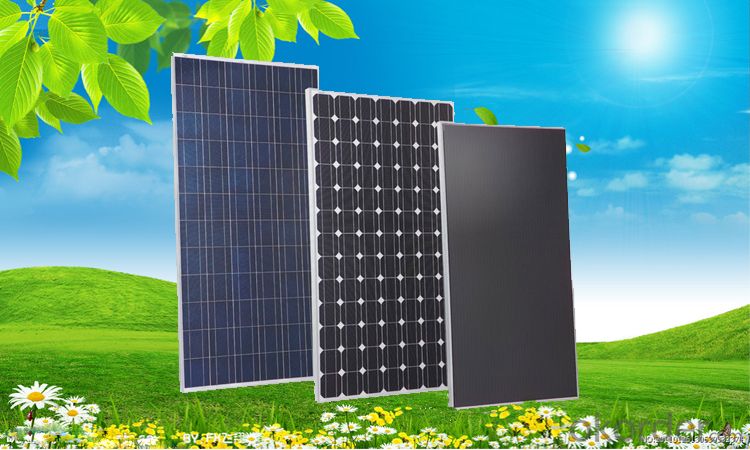
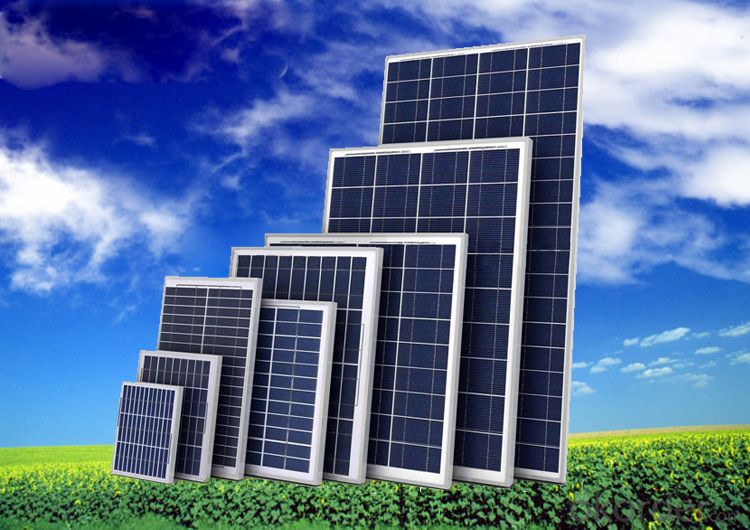
Packing & Shipping:
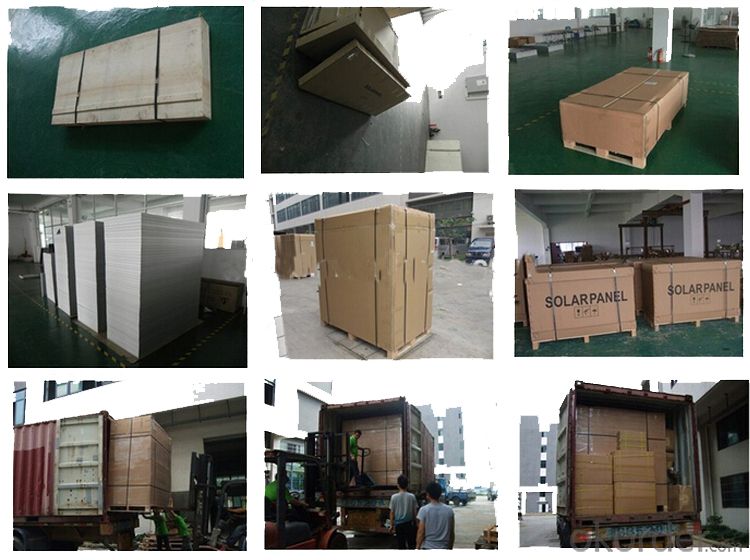
We have rich experience on how to pack the panels to make sure the safety on shipment when it arrives at the destination.
The normal size is packed by 25pcs/ carton / pallet. Paper carton for FCL shipping and wood carton for LCL shipping.
Company Description
CNBM International Corporation, as an important external business platform of CNBM Group, plays as a role to export solar products produced by CNBM. Headquartered in Beijing, We have entered into Solar PV industry since 2005. CNBM Solar is specialized in PV power systems which takes advantage of reliable supplying, convenient installation and free maintenance, and has been used widely, and it is the compensation and substitution of normal power supply. We provide power solutions for home, business and industrial customers, and provide off-grid PV systems for rural area. Our company not only can supply high quality solar Products, but also provides professional system Solutions and high quality services.
FAQ:
(1)What price for each watt?
It depends on the quantity, delivery date and payment terms.
(2)What is your size for each module? Can you tell me the Parameter of your module?
We have different series of panels in different output, both c-Si and a-Si. Please take the specification sheet for your reference.
(3)Can you provide the peripheral products of the solar panels, such as the battery, controller, and inverter? If so, can you tell me how do they match each other?
Actually we are only manufacturer of solar panels, but we could try to source them for you in China if you need. We could provide you an optimal system design to instruct you how to install.
(4)Do you have the CE, TUV, UL Certification?
We’ve already passed all the tests, and any certificate is available.
- Q: Hello, I have been trying to go green, I Have purchase somesolar panel they are about 45watts I been putting it against my window and getting ok power out of it enough for my lights and a couple of low watts gadget (cellphone, 2v light, portable dvd) for couple of hours.But its seem to drain the 2v faster then I can charge Am I getting the most power out of my panel?Or should I place it on the roof? I'm in Texas and it gets hot and sunny the sun beam my room windows pretty good during 4pm-6pm.
- It will generate MUCH more current if placed outside of the window. The best position is pointing directly south. Over the period of one day, you will get the most average sunlight pointing in that direction.
- Q: Are there any health risks associated with solar panels?
- There are no direct health risks associated with solar panels. However, improper installation or maintenance may pose electrical hazards, and exposure to high temperatures or falling from heights during installation can lead to accidents. Additionally, some solar panels contain small amounts of hazardous materials, but they are tightly sealed and the risk of exposure is minimal. Overall, when installed and maintained correctly, solar panels are safe and have numerous environmental and health benefits.
- Q: Are there any limitations to the lifespan of solar panels?
- Yes, there are limitations to the lifespan of solar panels. While solar panels are designed to be durable and long-lasting, they do have a finite lifespan. The average lifespan of solar panels is typically around 25-30 years. However, environmental factors, such as extreme weather conditions, can affect their performance and longevity. Over time, solar panels may experience degradation, reducing their efficiency and power output. Additionally, technological advancements may render older solar panel models outdated or less efficient. Despite these limitations, proper maintenance and regular cleaning can help extend the lifespan of solar panels.
- Q: I need to find a way to clean solar panels that automated, at best;A way beside using a large 'squeegee'
- Hire Tinkerbell, Disney hasn't had much for her to do lately.
- Q: Do solar panels require regular cleaning?
- Yes, solar panels do require regular cleaning to maintain their efficiency. Dust, dirt, bird droppings, and other debris can accumulate on the surface of the panels, reducing their ability to generate electricity. Regular cleaning ensures optimal performance and maximizes energy output.
- Q: I know there's different brands of solar panels and they cost different amounts.But if anyone know the average price of one solar panel could you help me out?Also could you please list the size of the solar panel.
- That okorder
- Q: How do solar panels affect roof maintenance?
- Solar panels can have both positive and negative effects on roof maintenance. On the positive side, solar panels can provide an added layer of protection to the roof by shielding it from harmful elements like UV rays, rain, and snow. This can help extend the lifespan of the roof and reduce the need for repairs. However, solar panels can also make roof maintenance more challenging as they need to be regularly cleaned and inspected to ensure optimal performance. Additionally, any repairs or maintenance work on the roof may require temporarily removing the panels, adding an extra step to the process.
- Q: We see increasing, what appear to be, solar panels on electric poles?
- Create okorder /
- Q: How can I calculate the amount of watts needed for a solar panel to power a water and air pump in gal/hr and a 600 watt LED light?
- Mimi: Solar Power is not really that economical, and has many other disadvantages as well. You did not specify much info in your question as to the size of the water or air pump. So let's make some assumptions to get you some numbers. ) Let's say the water and air pump are about HorsePower (HP). The HP pump , considering efficiency losses, will draw around ,000 Watts , or kW. 2) The 600 Watt LED Light is quite high --- they are usually much smaller lights 40 Watts or less. BTW --- these LED lights are very expensive light as well. Just so you are aware. Between the pump(s) ( maybe 000 to 400 Watts) and the 600 Watt light ----- and without knowing the specifics --- you are probably looking at around 2,000 Watts or 2 kW. A 2 kW Solar PV unit will run around $20,000. The PV unit will only run at full capacity during daylight hours. They usually average about 5 hours per day. So you will only be able to run your pump and LED Lights during the middle of the day --- maybe 0:00 AM to 5:00 PM. If you want to run the pump and lights after sundown, you will need battery back-up. The electric storage batteries will likely run about an extra $5,000. They will last about 5 years. If you decide this doesn't work out well --- you can stay with the local utility --- at $0.0 per kWh. It will cost you about $0.0 per hour to run the pump --- maybe 30 to 50 cents per day. It would cost you about 6 cents per hour to run your light. Maybe 30 or 40 cents per day. You could essentially run your pumps and light several hours each day --- all for about $ per day, or $365 per year. This sounds like a less costly alternative.
- Q: Are there any restrictions on installing solar panels in certain areas?
- Yes, there may be restrictions on installing solar panels in certain areas. These restrictions can vary depending on local regulations, homeowner association rules, and building codes. Some areas may have permit requirements, aesthetic guidelines, or zoning restrictions that limit the placement, size, or visibility of solar panels. It is important to research and comply with these regulations before installing solar panels in any specific location.
Send your message to us
156mm Solar Cells Photovoltaic Product for Churches - Solar Panels
- Loading Port:
- Shanghai
- Payment Terms:
- TT OR LC
- Min Order Qty:
- 7875 watt
- Supply Capability:
- 10000000 watt/month
OKorder Service Pledge
OKorder Financial Service
Similar products
Hot products
Hot Searches
Related keywords
